This week, we will look at an Opus romanum antependium from the late 13th century kept in the Cathedral treasury of Anagni, Italy. Just like with the Opus cyprense goldwork embroideries from last week, their provenance isn’t as clear-cut as the name Opus romanum suggests. This antependium was never historically referred to as Opus romanum. Only in recent years has it been attributed to this body of work based on stylistic grounds. Apart from Rome, the antependium could have been embroidered in other places in the regions of Lazio and Umbria. Let’s have a look at this unique piece of medieval goldwork embroidery.
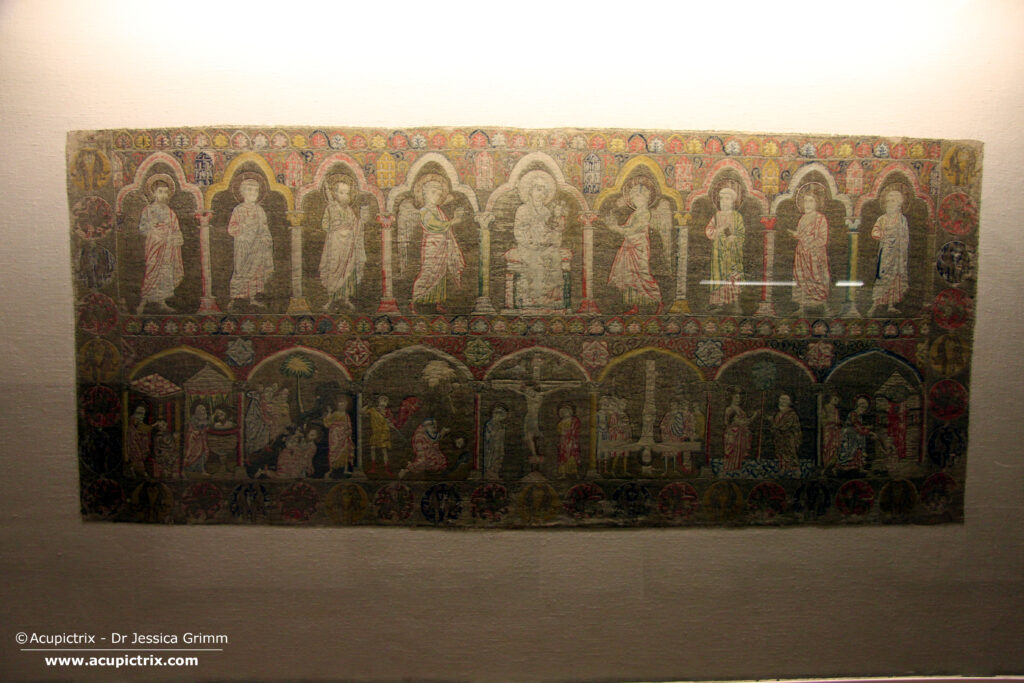
Firstly, the design of the Opus romanum antependium consists of two parts. The top band shows figures in arcades. From left to right we see, Bartholomew the Apostle, Saint John, Saint Paul, a censing angel, Mary with child, a censing angel, Saint Peter, James the Greater (?) and Philip the Apostle (?). The censing angels and the little buildings in between the arcades at the top indicate that this is the heavenly Jerusalem.
The band below shows embroidered scenes from the lives of Saints Peter and Paul. From the left, we see the healing of Saint Paul by Ananias of Damascus, the stoning of Saint Paul in Lystra, the beheading of Saint Paul, the Crucifixion with Mary and Saint John, the crucifixion of Saint Peter, Domine quo vadis, and the healing of the lame man at the temple gate.
The two bands are surrounded by a smaller band with roundels filled with a pair of parrots and a gryphon. The same symbols we already saw in the Opus cyprense vestments. It appears that when Pope Boniface VIII donated these paraments to Anagni Cathedral, he ensured that, despite their diverse origins, they exhibited a certain uniformity.
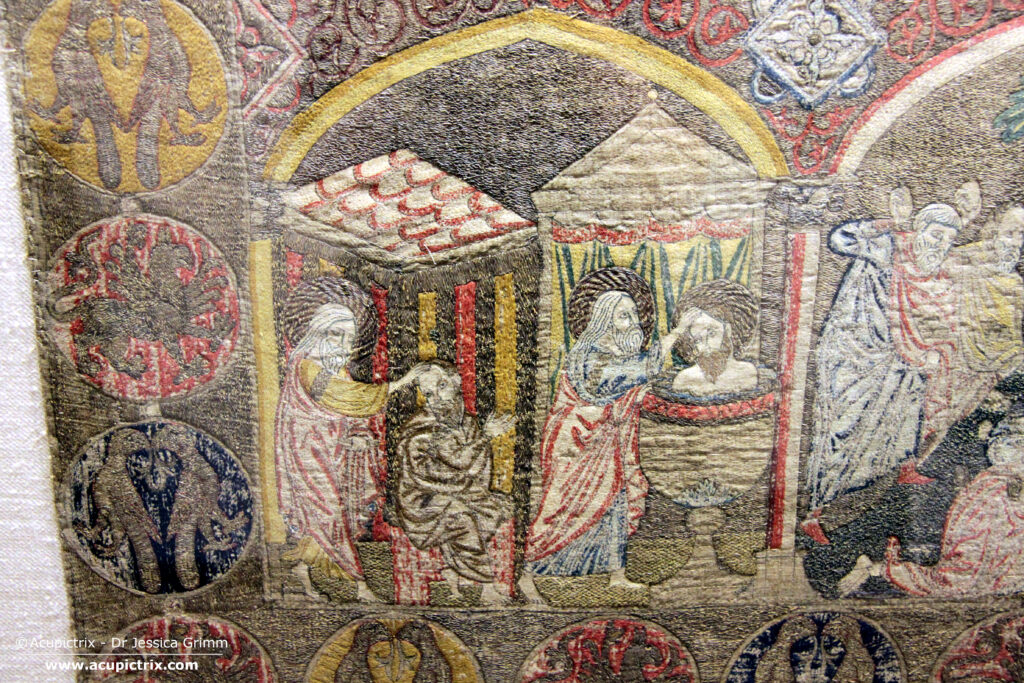
In the case of this antependium, Opus romanum is worked on a linen background. The medieval embroidery features surface-couched gold thread and silk embroidery. The gold threads are couched down in pairs and can run horizontally or vertically. The couching patterns used are chevron (around the figures in the upper band), slanting lines (nimbs in the upper band), radiating lines (nimbs in the bottom band) and bricking (everything else). The silk embroidery consists of split stitch.
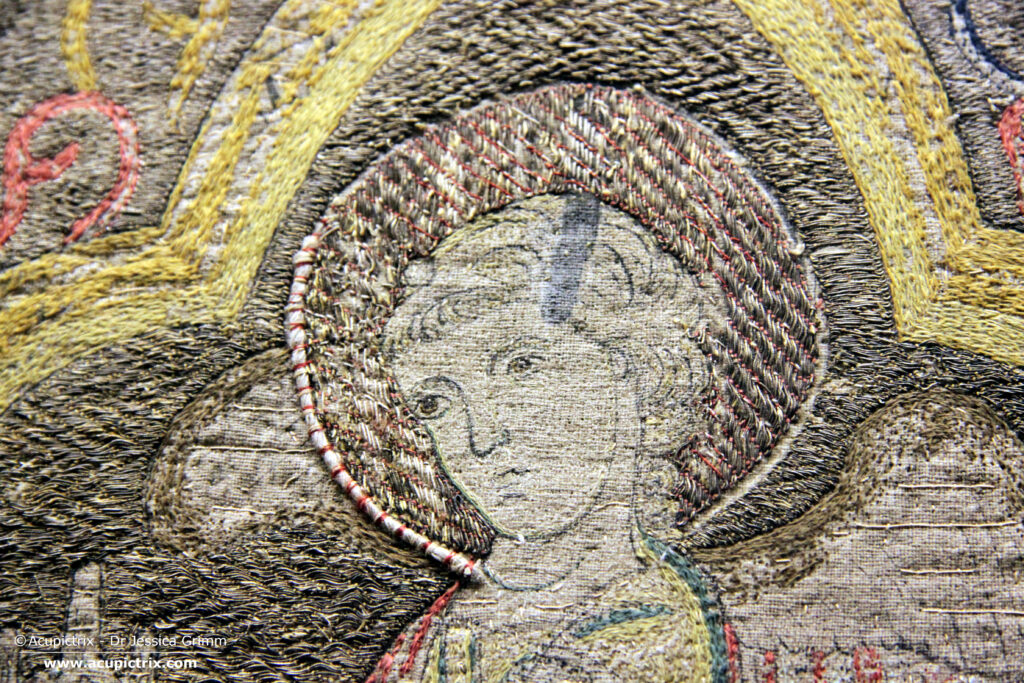
The late 13th-century embroidery on the Opus romanum antependium is not very well preserved. This means that the beautiful line drawing of the design is clearly visible in some places. Where the silk embroidery has survived, the vivid colours and the stark contrasts between them (i.e. stripyness) seem to be a characteristic of this type of embroidery. The nimbs were outlined with a linen string couched down with red or blue silk. Was this all the embellishment, or were there once pearls attached to the string?
When examining these preserved embroidered paraments in the Cathedral Treasury of Anagni, it becomes clear that Pope Boniface VIII was able to gift embroidered textiles from a diverse range of sources. There are Opus anglicanum and Opus cyprense, as well as this more locally made antependium. The stitching materials are coloured silks and metal threads, used for all of these, on either linen or samite. The versatile split stitch is a firm favourite, whereas either underside couching or surface couching was used to attach the metal threads. Over 700 years ago, with this somewhat limited number of materials and techniques, these very diverse goldwork embroideries were created. Much gratitude to the people of Anagni who looked after them so well!
Literature
Elster, C., 2018. Die textilen Geschenke Papst Bonifaz’ VIII. (1294-1303) and die Kathedrale von Anagni: Päpstliche Paramente des späten Mittelalters als Medien der Repräsentation, Gaben und Erinnerungsträger. Michael Imhof Verlag, Petersberg.
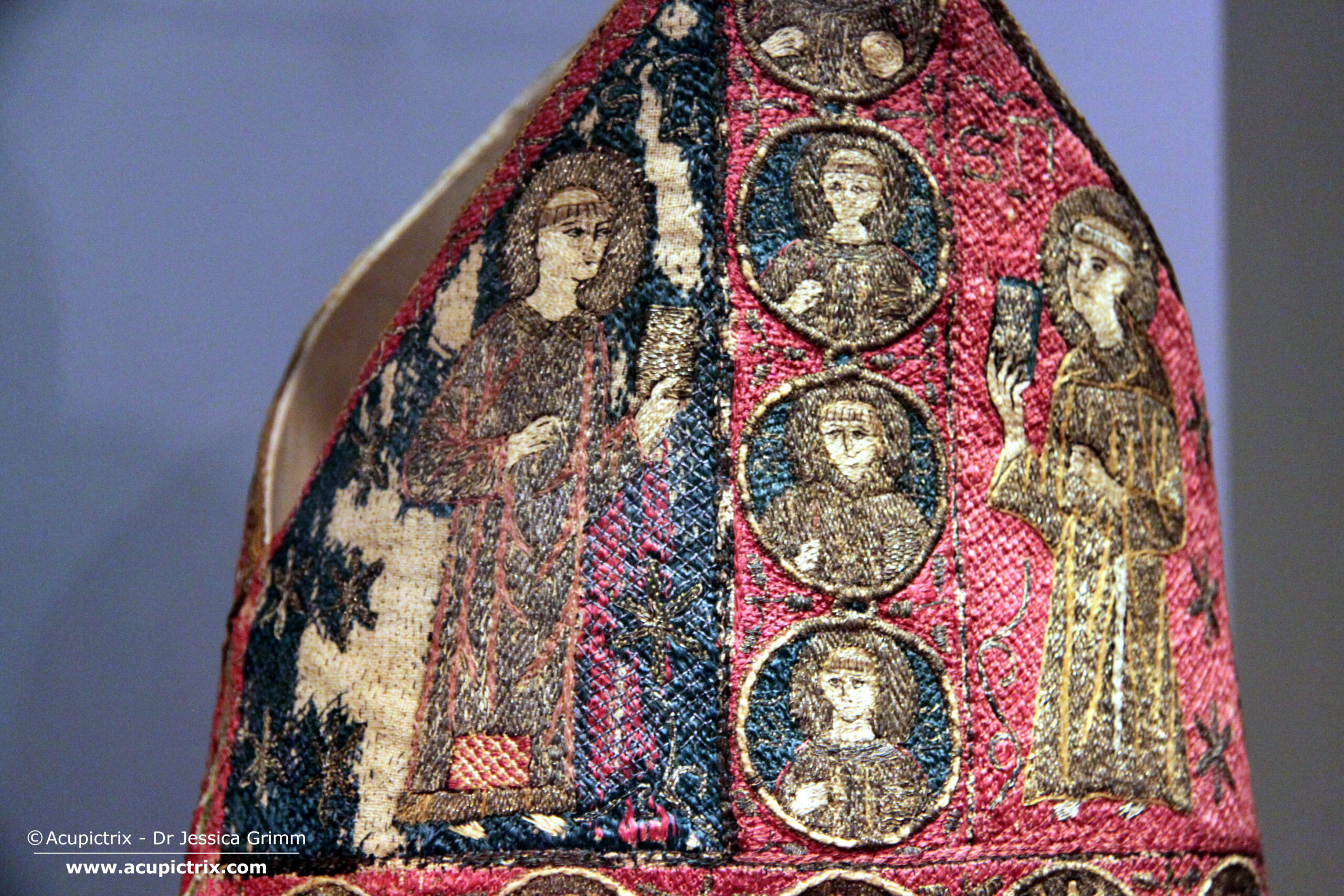
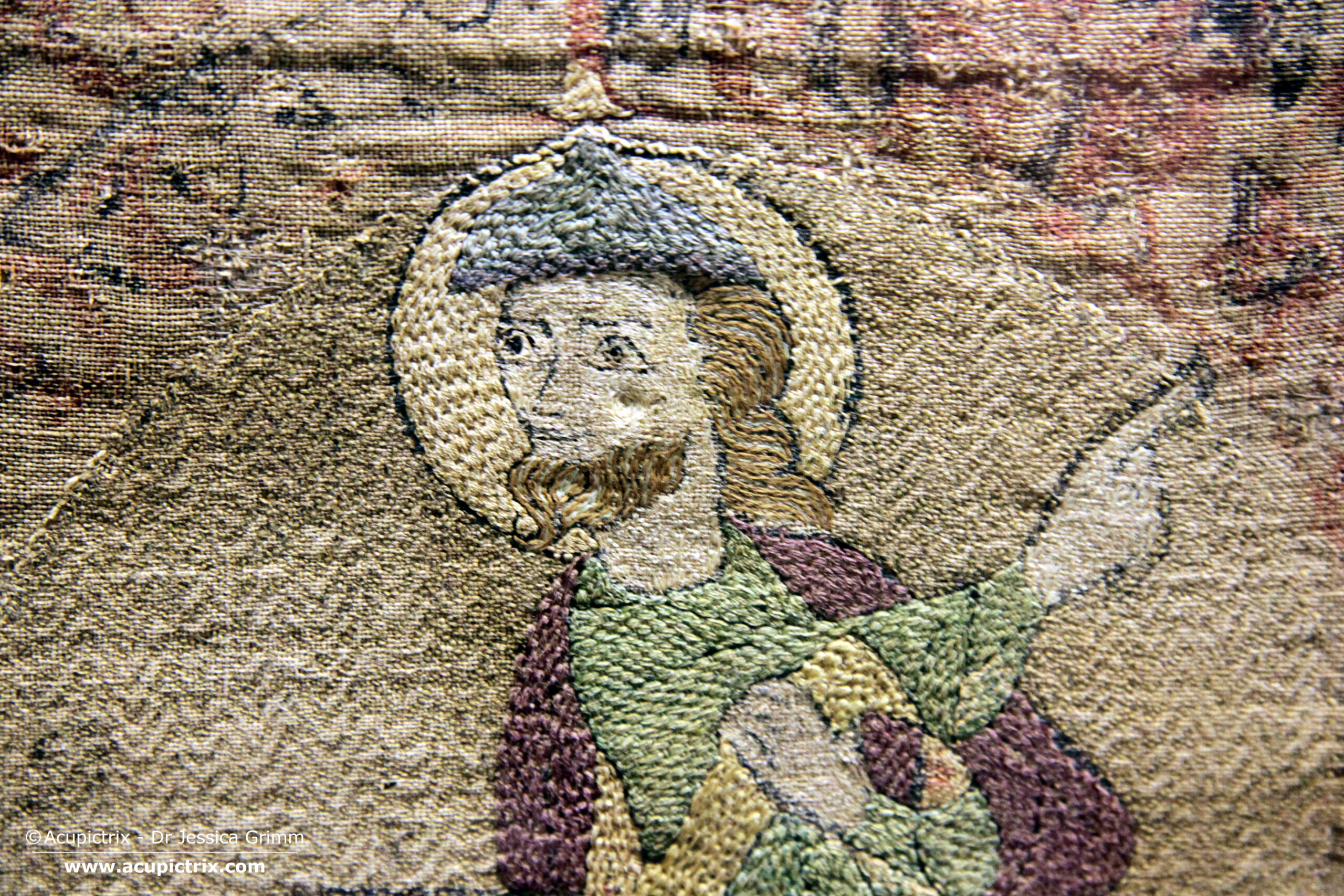
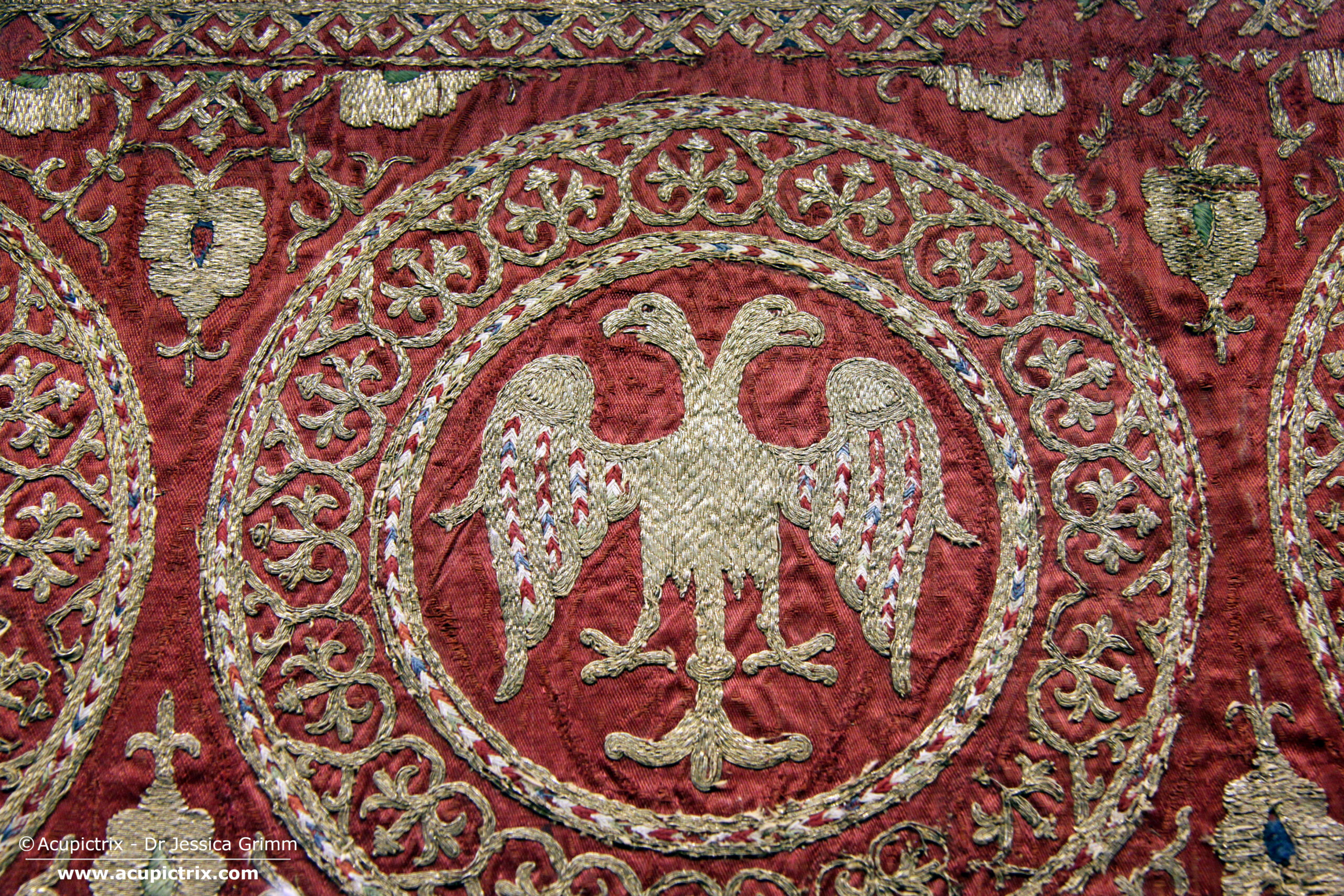
0 Comments